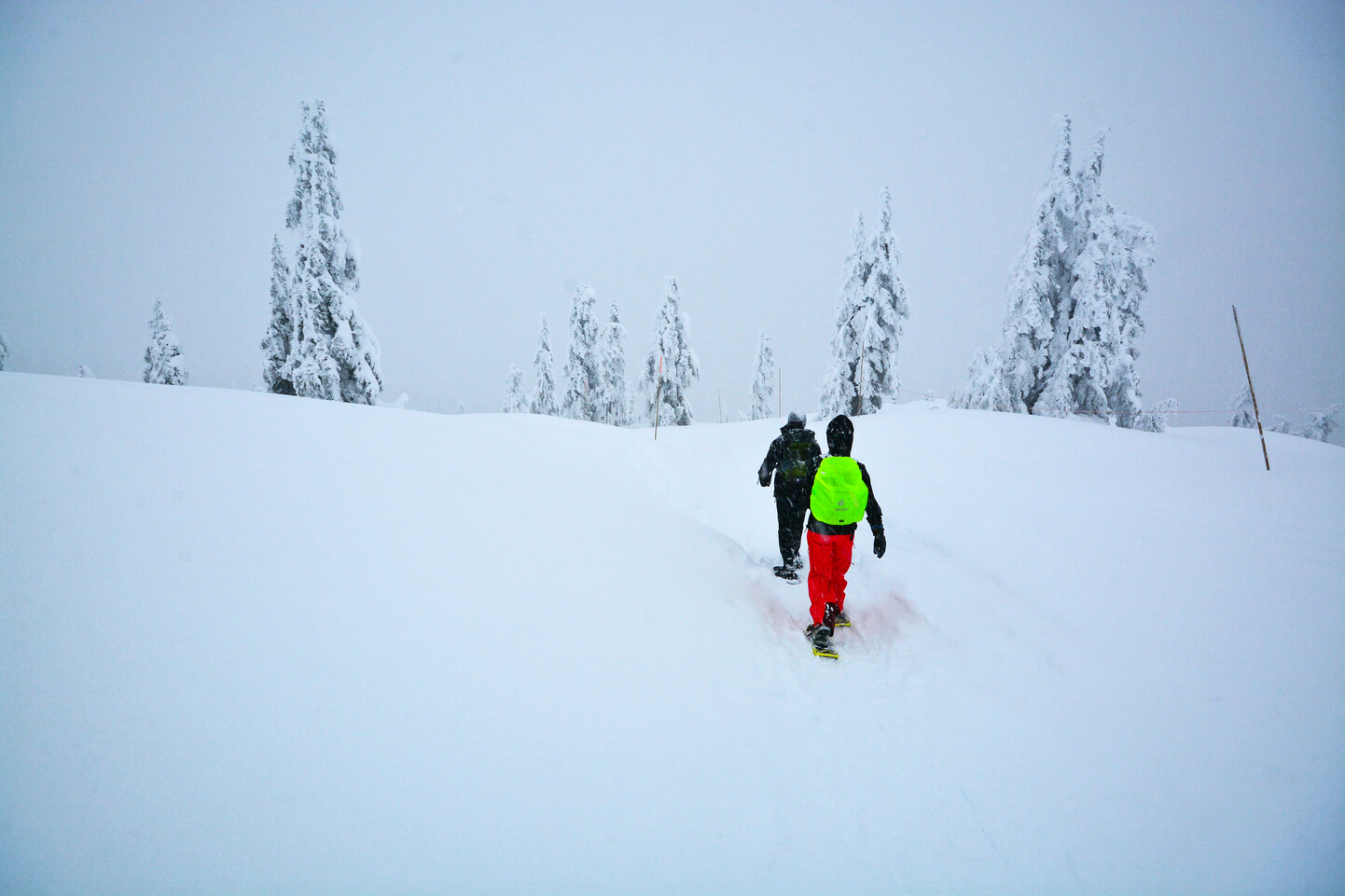An increasing number of cross-country skiers are visiting the park during winter. Some special precautions are necessary with regards to access and to proper equipment. The Naiset Cabins require a reservation from December 1 to May 31. Please contact Mount Assiniboine Lodge for details.
Assiniboine Pass
Assiniboine Pass is the most popular route into the park. Use the trailhead facilities in Peter Lougheed Provincial Park, Alberta, from Mount Shark along the Karst Trail to Watridge Lake. From there, follow the trail around the northeast shore to the Bryant Creek trailhead in Banff National Park. Follow the Bryant Creek Trail over Assiniboine Pass. When skiing this route in reverse, caution must be taken not to miss the Bryant Creek/Watridge Lake connection. The route is safe from avalanches as long as the basic route-finding techniques are used. In normal years, conditions for ski-touring are generally good from December 15 to April 30.
An access route leads from the Sunshine Ski area in Banff National Park as previously outlined. This route is very difficult and demanding. It should not be attempted by inexperienced or improperly equipped skiers.
Skiers should register at any Banff Park Information Centre or warden office and read the daily avalanche hazard bulletins posted. The trip should only be attempted under good winter travelling conditions. Citadel Pass area is particularly avalanche-prone.
Skiers often get lost in the Valley of the Rocks. They try to follow the lay of the land, which leads them into extremely undulating terrain. The best route to follow is: from the bottom of Citadel Pass, traverse around the toe of a large avalanche fan on the south side of the pass, then climb up along the southern edge of the slide to a rock outcropping and traverse southerly to another outcropping. Stay on the uphill side, traverse at a steady uphill grade staying just inside the trees for approximately 4 km, then angle into the centre of the valley and follow the natural clearings to Og Lake. Beware of a large avalanche slope that crosses the valley just before Og Lake. Stay well up on the opposite (west) slope.
Equipment
If you plan to ski into or out of the park, either metal-edged “Telemark-type” Nordic skis or alpine touring equipment are recommended. Warm, durable boots and climbing skins are also recommended. Light cross-country skis are not suitable. Visitors must be prepared to camp out overnight since snow conditions may make it impossible to complete the trip in one day. Winter travellers should also carry avalanche safety equipment and know how to use it.
Avalanche safety
Winter visitors to Mount Assiniboine Provincial Park must stay alert to the possible threat from avalanches.
When an avalanche victim is caught in the backcountry, their chance for survival depends on their efforts to keep above the flowing snow and also on what their fellow companions can do to rescue them.
The probability of survival decreases rapidly after 30 minutes. It is therefore essential that touring parties be equipped for self-rescue. Each member of the party must carry an avalanche beacon, a sectional probe and a collapsible shovel. Do not rely on skis for digging: avalanche debris is difficult to dig, even with a shovel. Attachments for converting a pair of skis into an emergency toboggan are also useful. Do not let wearing an avalanche beacon give you a false sense of security. Note that one-third of avalanche victims die.
There are three basic safety rules:
- Observe the principles of safe route selection.
- If danger areas must be traversed, they should be crossed one person at a time. Obviously, if all of the members of a party are caught in the same avalanche, any hope of rescue is drastically reduced.
- If a victim is buried in an avalanche, the rest of the party should search immediately unless more help is only minutes away. If the touring party is large, a messenger can be spared while the search proceeds. The history of avalanche accidents has far too many tragic instances of survivors leaving the scene in a panic to seek help when a few minutes of organized search would have uncovered the victim.
